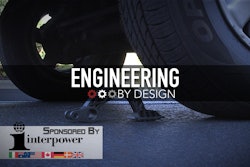GE Sets Guinness World Record for Most Efficient Power Plant
Last Friday, GE and French electric utility company EDF began operation of the first ever combined-cycle power plant, which was equipped with GE’s HA turbine.
The company was recognized by Guinness World Records for powering the world’s most efficient combined-cycle power plant based on an achieved efficiency rate of up to 62.22% at the Bouchain plant.
GE’s HA gas turbine can reach full power in less than 30 minutes, and it helps pave the way for greater use of renewable energy by allowing partners to respond quickly to fluctuations in grid demand, integrate renewables onto the grid and adapt quickly to weather changes.
Capable of generating more than 605 Megawatts, the plant will generate the equivalent power needed to supply more than 680,000 homes, and the HA compressor flows air at a rate that could pump up the Goodyear blimp in 10 seconds.
The All Seeing, All Knowing Eye
RedEye is a new technology from Rice's Efficient Computing Group that could soon lead to computers with efficient continuous vision.
According to professor Lin Zhong, RedEye is an example of technology under development for wearables designed to support people in their daily lives. It’s pervasive computing, which can recognize and even anticipate a person’s needs. It has already made personal healthcare more manageable.
The bottleneck for continuous vision is energy consumption because smartphone cameras are battery killers, especially when processing real-time video. According to the team, current tech needed to be 100 times more energy-efficient to be commercially viable and they did it with software optimization.
The problem was converting images from analog to digital format. The process isn’t efficient, so the team tried to analyze the images while they’re still in analog.
Using a combination of the latest machine learning, system architecture and circuit design, RedEye uses a technique called a "convolutional neural network," an algorithmic structure inspired by the animal visual cortex.
Now the team can recognize objects without actually looking at the image. They look at the analog output from the vision sensor, and can understand what's there without having an actual image. The tech will only digitize images that are worth the energy.
This could even help with privacy concerns because they could programmatically discard information if say, you are somewhere, or doing something, that you don’t necessarily want a record of. Black Mirror did an episode on it, highly recommended viewing, but it will terrify you.
Customized, 3D Printed Car Skin
Japanese car manufacturer Daihatsu may be the first automaker to offer mass customization with 3D printing. The company is using Stratasys Fused Deposition Modeling to create 15 different "effect skins" in 10 different colors for the company's Copen roadster.
Essentially, it looks to be little more than a 3D-printed decal, but some people like the idea of adding craters, ridges, and spikes to their cars. Still, these are parts that used to take up to three months to develop, and now you can have them in two weeks.
The company uses Stratasys ASA plastic printed on Fortus 3D printers. It provides the durability and UV resistance that the company's industrial design and engineering partners were looking for, all with minimal wall thicknesses.
The skins can only be ordered for front and rear bumpers and fenders, but this could be the beginning of a trend towards the mass customization of end-use car parts.
The Effect Skin project is only being tested in select markets now, but the plan is for commercialization by early 2017.
One day, we won't even be stocking parts. You'll buy the digital file and have your local 3D printing service bureau print it for you.
This is Engineering By Design.






















